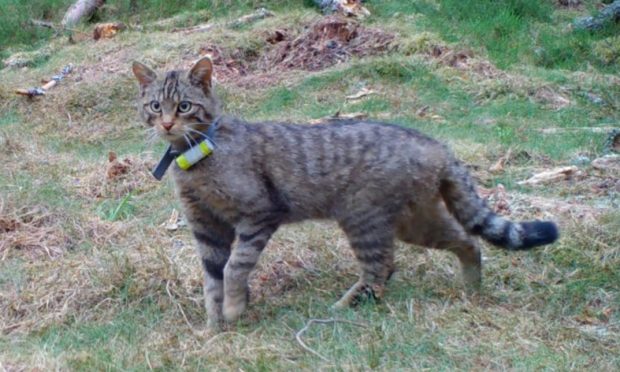If you’re having chicken for Christmas dinner you could face competition for a bird from wildcats in the Cairngorms.
The critically endangered animals have been released into the national park in a bid to save the endangered species – and researchers have discovered that some have been hunting chickens.
19 of the cats, known as ‘Highland Tigers’, are roaming free as part of the trial at undisclosed locations in the Cairngorms.
In the NatureScot podcast, Dr Keri Langridge, Field Manager for the Saving Wildcats Partnership from the Royal Zoological Society of Scotland, revealed the project has gone better than they could have hoped so far.
“They (the wildcats) have a lot of challenges. They’ve done a lot better than I think anybody was expecting,” she explained.
“These kinds of projects come with very high mortality risk.
“It’s just the nature of the nature of the beast.
“We were expecting high mortality, particularly from roads.
“But so far, despite the cats walking up and down the roads, crossing the roads frequently, we haven’t had any road mortality.”
Chicken on menu for wildcats
While the cats are staying alive in their new habitat, the supply of food has caused some concern.
Dr Langridge continued: “We have had situations with a couple of cats where they stopped moving
“We think they were having trouble finding food.
“Cats have come into conflict in areas where pheasants are bred in pheasant pens.
“We engage with the estates and we work together very closely with them to look at the impact the cats are having.
“And we have had instances of cats predating chickens.
“We have to engage with the people where that’s happening and try to give them advice about how to prevent it.
“That was very early on after their release, so we did some supportive feeding, supplementary feeding for them.
“Their main other threats are going to come from land use, so threats from particularly estates that rear game birds for shooting, because they do predator control.
“We need to make sure while they’re doing that predator control, they don’t accidentally kill any of the wildcats.”
Wildcats ‘functionally extinct’
Previous research concluded the species was “functionally extinct” in the wild, partly due to breeding with feral cats.
Disease and habitat loss have also been blamed for reducing their numbers.
Royal Zoological Society of Scotland (RZSS) is monitoring the wildcats using GPS-radio collars.
About 60 wildcats will be released over the next three years.
The project was approved under licence by NatureScot and is the first-ever conservation translocation of wildcats in Britain.


